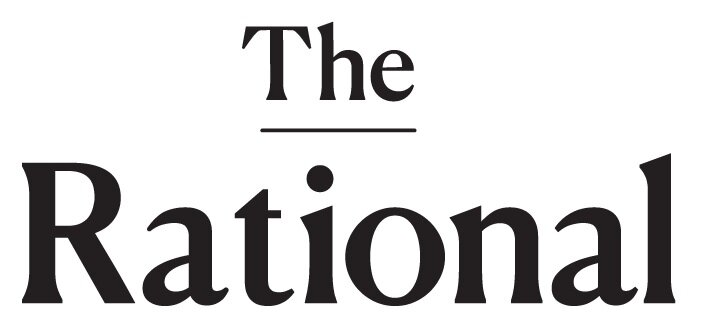We Need to Talk About the Male Gaze for a Minute
What “Once Upon a Time in Hollywood”, “Hustlers” and even “Euphoria” are doing for female performance.
Photo: Once Upon a Time in Hollywood, Sony Pictures
About halfway through Quentin Tarantino’s Once Upon A Time in Hollywood, Margot-Robbie-as-Sharon-Tate attends a movie matinee to watch herself in The Wrecking Crew. The audience is quickly implicated in a chain of vigilance: we watch Tate watch the audience watch her own performance; the audience happily approves it, so Tate approves it, and we, of course, can’t wait to chime in with our feminist takes.
Critics were quick to chastise Tarantino for his treatment of Tate — writing for Vulture, Bilge Ebiri observes that “in the film, Tate is a character who is often looked at and talked about but who rarely has a voice.” Others argued that the Wrecking Crew scene particularly showcases Tate’s lack of agency, as she experiences validation for her work only once the audience has praised her performance.
“Inside the theater,” writes Rich Juzwiak in Jezebel, “she [Tate] watches herself eagerly, and then more eagerly as she experiences the audience’s warm reception of her somewhat slapstick performance.” This sort of external validation, he concludes, is anything but empowering: “Sharon Tate lived for the applause.”
The resounding sentiment is simple: Poor thing. If only Tate harbored more self-determination — if only she were more confident — her opinion of herself wouldn’t rely so heavily on the approval of a random audience. Sure, Tate is not our most dynamic, agentive on-screen heroine, but it seems a little flip to automatically code her as pitiful. How might we push against the instinct to view a woman’s performance — and her interest in it — as inherently pathetic?
Elsewhere, we’ve demonstrated that we can: look no further than two of the season’s other biggest TV/film sensations, Euphoria and Hustlers.
In HBO’s Euphoria, Kat and Maddy, two high-schoolers dead-set on gaining respect from their peers (and the world) experiment with their sexual power by consciously incorporating performance into their daily lives. Kat does this quite literally with her foray into cam girl-ing; Maddy adopts a relentless Head Bitch In Charge persona both on and off the beauty pageant stage, heightening her own spectacle in rhinestone eye makeup and matching two-piece costumes reminiscent of Christina Aguilera in “Dirty.”
Kat (Barbie Ferreira) finds some acceptance as a cam girl. Credit Eddy Chen/HBO
Hustlers offers an even more exaggerated portrayal of performance-as-power: it is perhaps the highest production-value, most mainstream-targeted filmic reclamation of sex work to date. The movie onboards its audience to the world of stripping via newcomer Destiny (Constance Wu) who is shepherded by veteran nightclub performer Ramona (Jennifer Lopez). Through trial and error, with customer satisfaction as her ROI, Destiny learns both the science of dancing and the art of manipulation. Essential among this education is how to dissociate enough to sustain a guise of effortlessness while maintaining full control of the patron’s attention.
In Euphoria and Hustlers, the women’s choice to perform is framed as empowering, if not downright feminist. Kat makes bank, Maddy inverts the power dynamic between herself and her self-hating boyfriend Nate, and Destiny and Ramona launch a full-scale con operation to siphon money off a bunch of horny rich idiots.
The situations aren’t totally devoid of nuance: Kat’s experiment with camming comes with costs to her self-esteem, as she contemplates just how much virtual loser-dom she can put up with. Maddy is conscious that despite her staged puppeteering act, she and Nate are equally bound to each other — “She knew no matter what he did, she’d still love him,” narrates Rue (Zendaya). And of course, despite the capital the strippers accrue in Hustlers, they still suffer disrespect and humiliation at the hands of the nightclub farers (not to mention charges of conspiracy, assault, and grand larceny).
Ultimately, though, their performative alter-egos are always depicted as liberating and brazen — Kat oozes newfound sexual confidence at the mall in a studded choker and mini-skirt; Maddy’s devil-may-care, half-mast gaze provokes anyone to try her; Hustlers repeatedly breaks out into shameless montages of women popping champagne, flaunting fur coats, and making-it-rain (the more aughts-era kitsch, the better). Watching these women get theirs, it’s impossible not to think (if not say aloud): Go girl.
What’s left relatively unexplored, though, is the fact that regardless of the power these women are able to procure in relation to men (be it money, control, desire, or some combination of the three), their success remains fundamentally dependent on their audience’s approval — just like Sharon Tate’s.
In his 1972 book Ways of Seeing, John Berger wrote that “men act” but “women appear.” He went on to argue that women are continually bound by a process of self-surveillance, and that their inner surveyor is a man. Women, he believed, are in control of their own image only insofar as their inner male surveyor has approved the portrayal; despite our best efforts, we are inescapably constrained by a (female-filtered version of) the male gaze.
According to Berger, no woman is in control of her own image, even when she consciously chooses to perform. But because reclaiming one’s own image is predicated on someone else laying claim to it first, performance itself, by his logic, is necessarily reactionary: It relies on a pre-existing, internalized male gaze. Given this framework, can performance ever be truly empowering?
Unfortunately, we don’t have many pop culture models that tease out the answer to this question. Instead, portraits of performance frequently slip into extremes: the silent, blonde Tate is at the mercy of her audience; while the cam girl, pageant queen, and strippers are in control of theirs. But in real life, it’s never this clear-cut: likely, the experience of performing feels neither 100% fulfilling nor 100% pathetic (think of the panic — both excitement and regret — that spawns immediately after posting a hot picture on Instagram). On the ground, in both our online and offline social lives, we’re left questioning ourselves: Who am I doing this for?
Berger would argue that interrogating the answer to this question is pointless, that any attempt to seek (if not find) our own personal “female gaze” is futile. He’s not completely off-base — it may very well be true that the patriarchy-produced demands on women are so ingrained that we will never not be acting, regardless of whether or not we’ve identified a specific audience.
But too often, big-box media suggest a binary of female performance: the woman is either powerful (Go girl) or pathetic (Poor thing). But we should resist this tendency; we should not accept this either/or proposition. Because beneath this false dichotomy, we’re all asking the same question of our performative behavior — To what extent am I motivated by self-confidence or self-consciousness? — and that clumsy, uncomfortable space deserves close consideration, too.
Ultimately, it’s just lazy: to collapse any spectrum into a binary, to glaze over the (often-conflicting) factors that influence us to do whatever we do, to sort ourselves into two tidy piles. Spotlighting “feminism” (or its limits) doesn’t require characters to either smash the patriarchy or submit to it. It would inspire more fruitful self-reflection to see a depiction of female performance that feels more true to form, something that articulates the confusing, messy space we often find ourselves, somewhere in the margin between choicelessness and choice.













